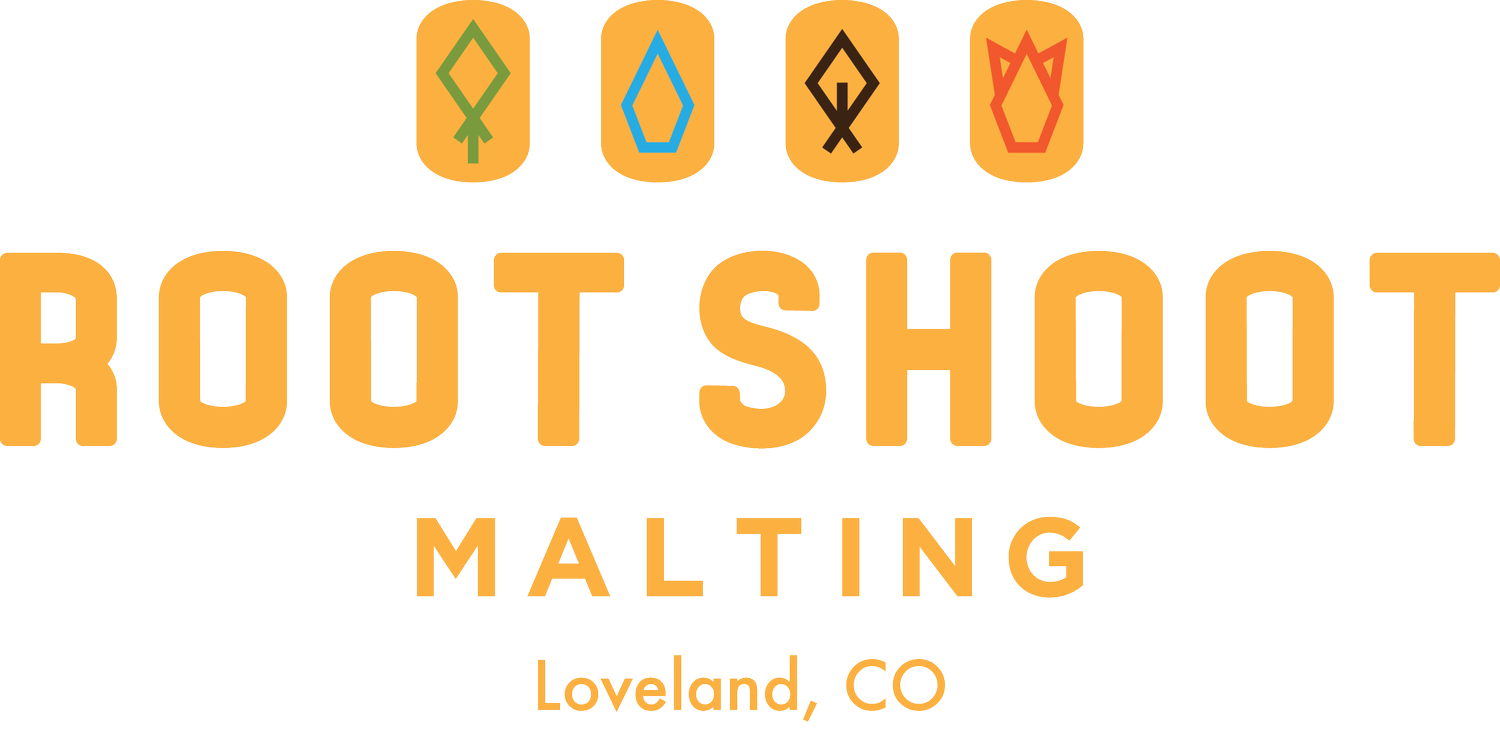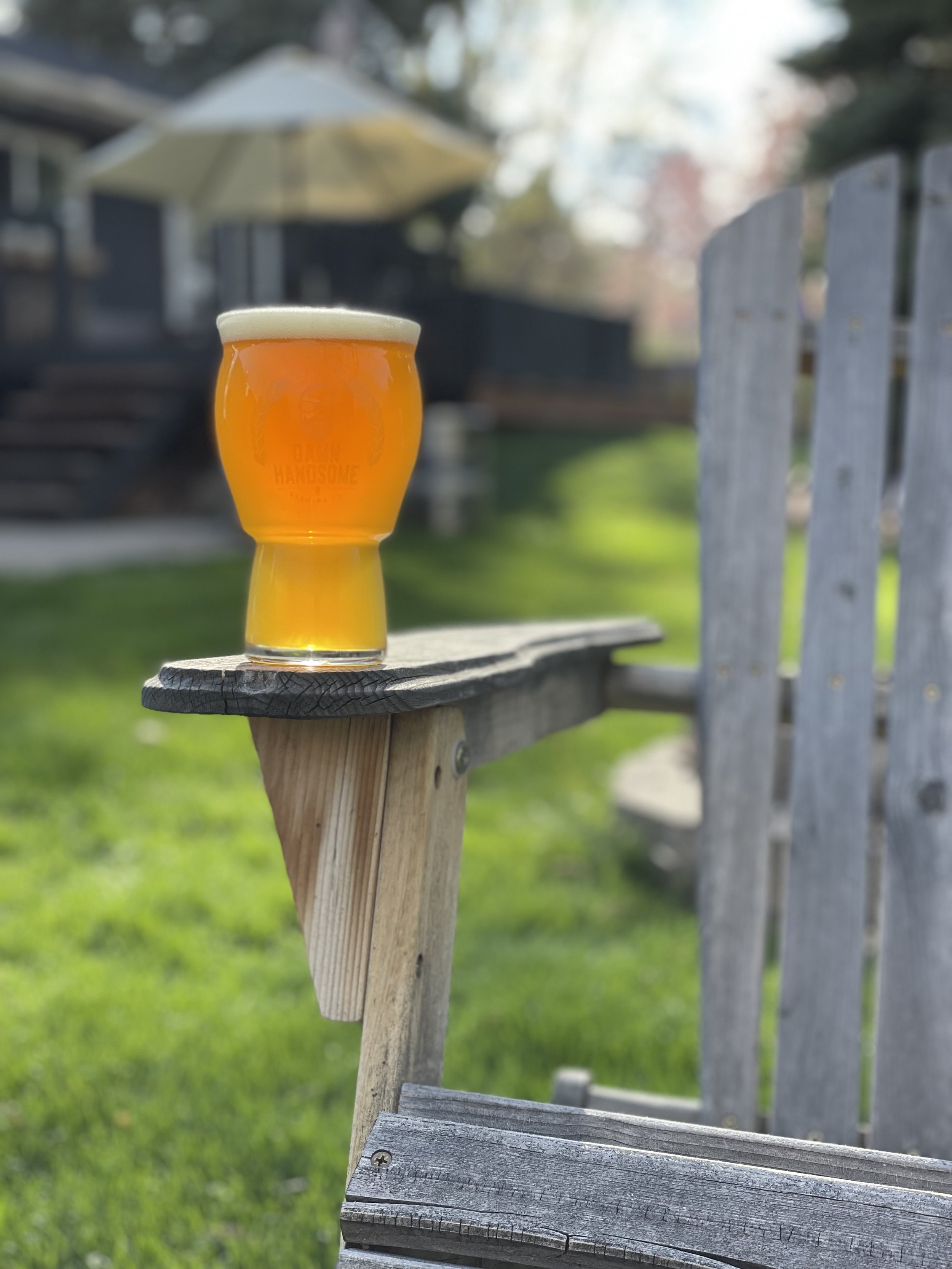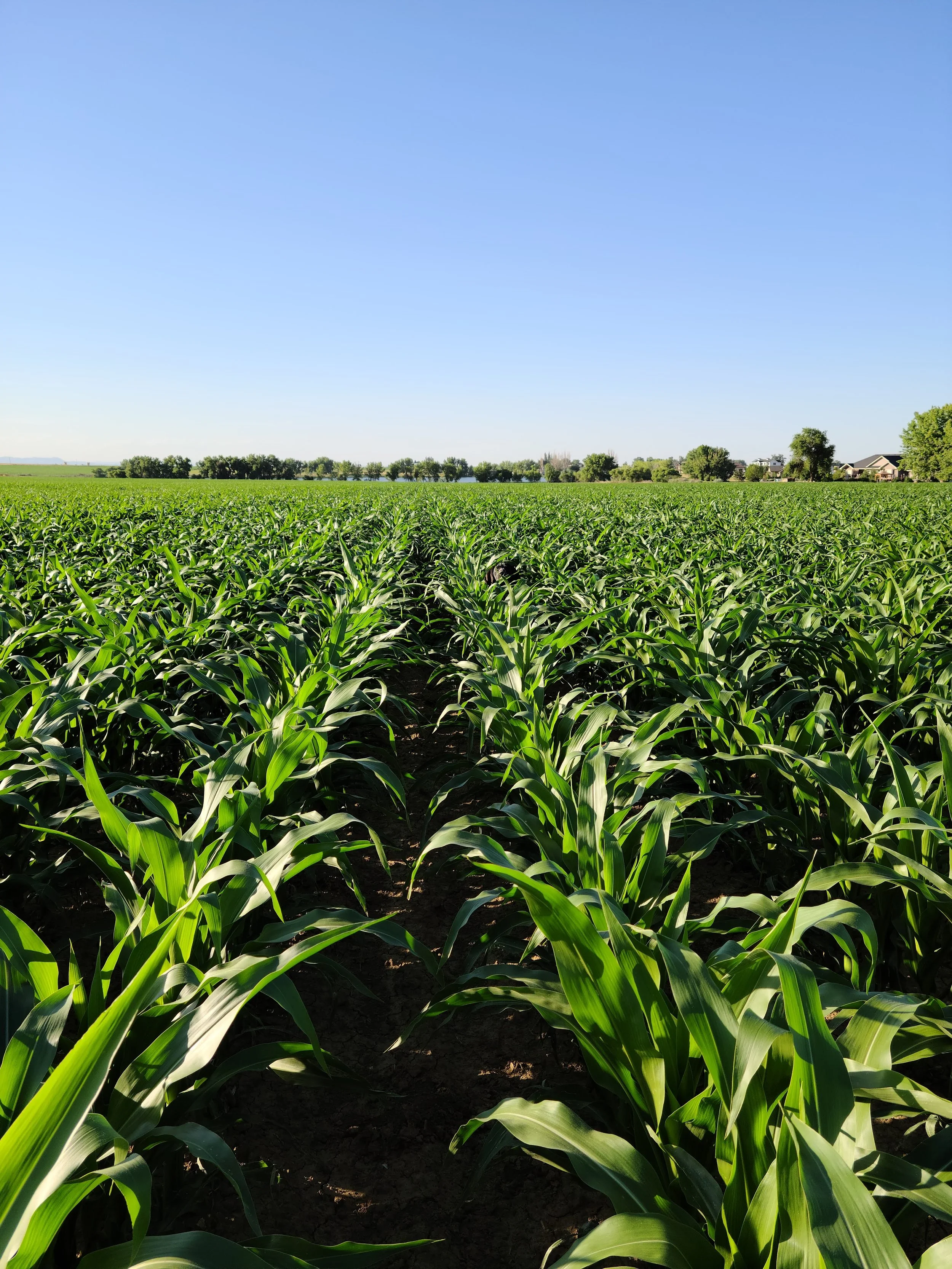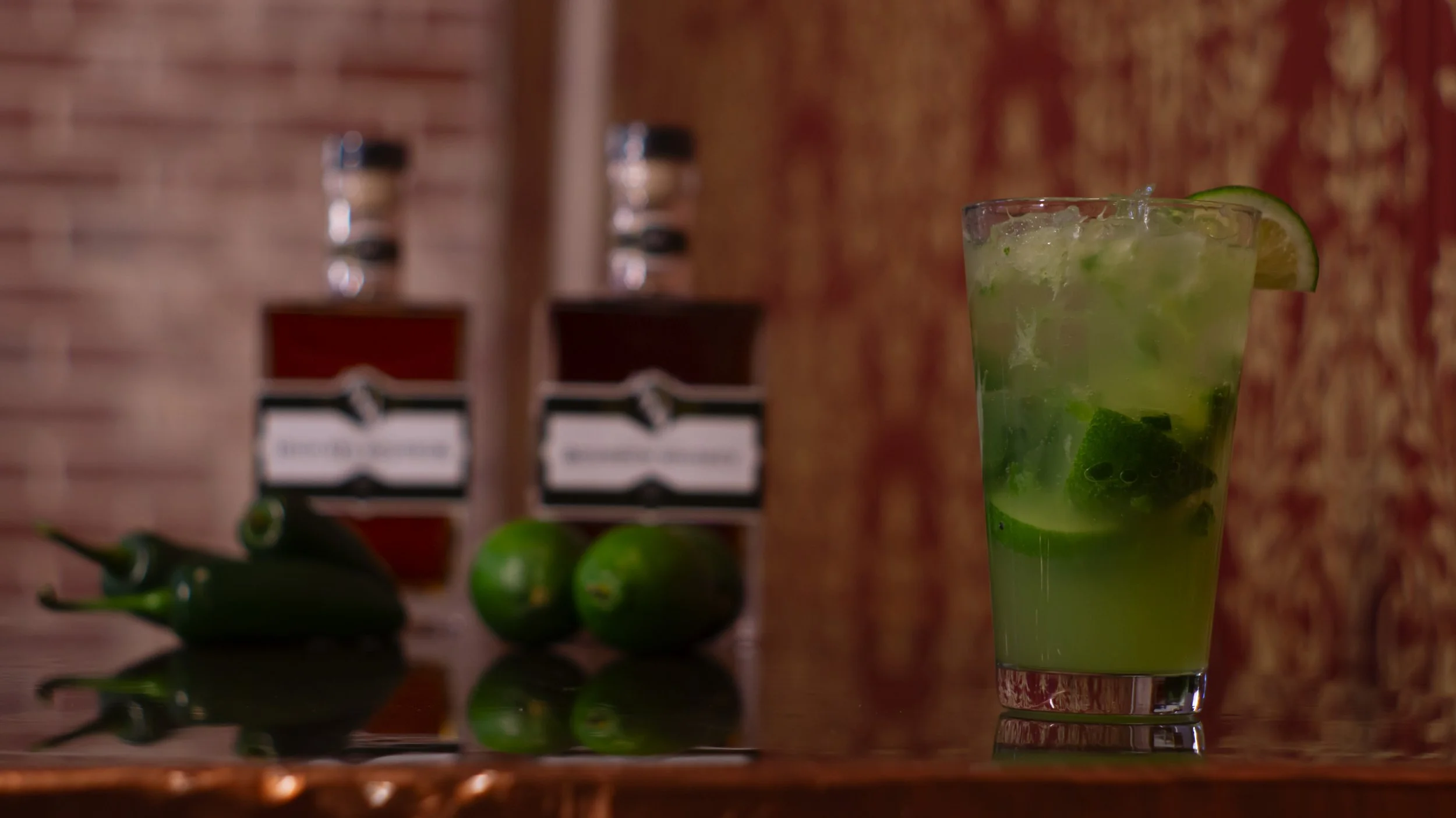We started our Homebrewer Highlights last month in honor of National Homebrew Day. At first, we figured we’d do a short blog post featuring three or four Root Shoot homebrewers and their beer, but as responses came in to the form we sent out, and as we started seeing all the amazing projects homebrewers are tackling with our malt, we decided to extend the project. It’s heart-warming to hear stories of cool people doing cool things. Especially when those people are exceedingly handsome.
Damn Handsome, one might say.
But we’re not biased. Heavens, no. We’ll just let this (Handsome) brewer fill you in himself. Meet…
Craig Kneeland, the Damn Handsome Brewer
A South Dakota native, Craig grew up on his family’s farm (naturally, he immediately won us over with that little tidbit!) and stayed in South Dakota through college, where he studied Financial Planning and Business. In fact, it wasn’t until he moved to Colorado with his now-wife Jen that he got into the craft beer scene but when he did…he jumped in with both feet! He joined the Liquid Poets Homebrew Club and has been an active member, serving as president twice as well as Events Coordinator, Membership Coordinator, and on the board at large.
He’s about to take the next biggest plunge that a homebrewer can take, but we’ll let him tell you about that himself.
How did you get into homebrewing?
I was always intrigued by taprooms. I enjoyed the environment and the idea of consuming something right from the source. I have a creative mind and seeing everything that went into brewing - the equipment, the details of the taprooms, and the beer, brought me joy. So, one day I decided to try brewing on my own. I started with an Amber Ale and it turned out alright. Knowing what I know now it would be fun to go back and taste that beer. For that first beer, I was brewing extract on a stovetop 5 gallons at a time, yet I had already had the idea of opening a brewery in my head. My wife and I lived in Denver at the time and would spend every single Wednesday visiting a new brewery. The obsession grew from there.
What do you love about Homebrewing?
I love the flexibility of creating something entirely your own and something that others can enjoy as well. I’ve also met good friends through homebrewing. In 2016, I joined the Liquid Poets Homebrew Club and that’s when I really started to get into it. I switched from brewing extract to all-grain and couldn’t believe how much more control I had over the final product. Some of the members that I met had infinite knowledge and were always willing to help share techniques and ingredients.
Trickiest Part of Homebrewing?
Patience and cleaning/sanitizing. There are a handful of things that can go wrong if your vessels are not cleaned properly. Brewers make wort, and yeast makes beer, if your cleaning practices aren’t dialed in you may end up with an infection or an undrinkable product. Recipe design can be tricky too. Know where your ingredients are coming from and know how different ingredients blend together.
Memorable Brewing Experience (Good or bad)
Thankfully, in all my years brewing, I’ve only had to dump 2 or 3 batches. When I first was getting started, I didn’t quite understand the process and ended up adding some lactose to one brew too late in the process and the beer ended up tasting overly sugary. I named that one “Sugar How’d You Get So Fly.” Another difficult brew was the first time I brewed a Wet Hop IPA with freshly picked hops. I didn’t account for the amount of wort that would get absorbed into the hops. I ended up having to take taking the lid of a pot and press out as much wort as I could just to yield enough wort. That one got named “Wet Hop Press IPA.” It was the most trying beer I’ve brewed, but it turned out great.
Over the last couple of years, I’ve won some Pro-Ams {Pro-Ams are competitions where amateur brewers get their winning beer brewed at a professional brewery} so that has definitely been a highlight. My first gold medal and Pro-Am (DC Oakes) was for a Cream Ale that I had no intention of even entering into a contest. I wanted to brew a light ale and happened to taste it a couple days before the deadline of a local competition and thought it hit all the marks. I named that one C.R.E.A.M. (Cream Ale Rules Everything Around Me.) The second Pro-Am I got most recently was for an Imperial Stout named Night Sweats Imperial Stout. That one will be on tap at Verboten in early fall.
Advice for new homebrewers?
Go for it! Start small. I started brewing extract kits with a speckled canning pot and carboy to get the process down and an understanding of what fermentation is, Later, I was able to move to all-grain. Join a local homebrew club for feedback and inspiration and remember that the end result will likely be beer. “Relax, don’t worry, have a homebrew” - Charlie Papazian
What's the best beer that you brew?
The best beer I’ve brewed recently was the Night Sweats Imperial Stout that won me the Verboten Pro-Am. It comes in at a sneaky 10% ABV. Recently, a friend and I re-brewed it and put it in a barrel from Dryland Distilling out of Longmont. We’ll see how that comes out!
What's next for you in brewing?
It might be a shameless plug, but I’m looking to open my own brewery, Damn Handsome Brewing, in Fort Collins/Northern Colorado. We are in the search of a location. We missed out on a spot a little over a year ago and since then, we’re determined to find PERFECT location. I love the neighborhood feel of taprooms. Outdoor space, a welcoming and inclusive environment, special releases, barrel projects, and local ingredients are all part of the plan. Not to get too far ahead of ourselves, but eventually, we’d maybe even open a second location in the mountains, near the Granby area.
Since this is a shameless plug anyway, make sure to check us out on Instagram and Facebook @damnhandsomebrewing to follow along in our brewery-build process. The website is up as well, although it’s still a work in progress: www.damnhandsomebrewing.com
And the last very important question: if you had to pick one (non-homebrew) beer that would be the only beer you would be allowed to drink for the next 10 years, what would it be?
Juicy Bits by WeldWerks Brewing is my desert-island beer!




















